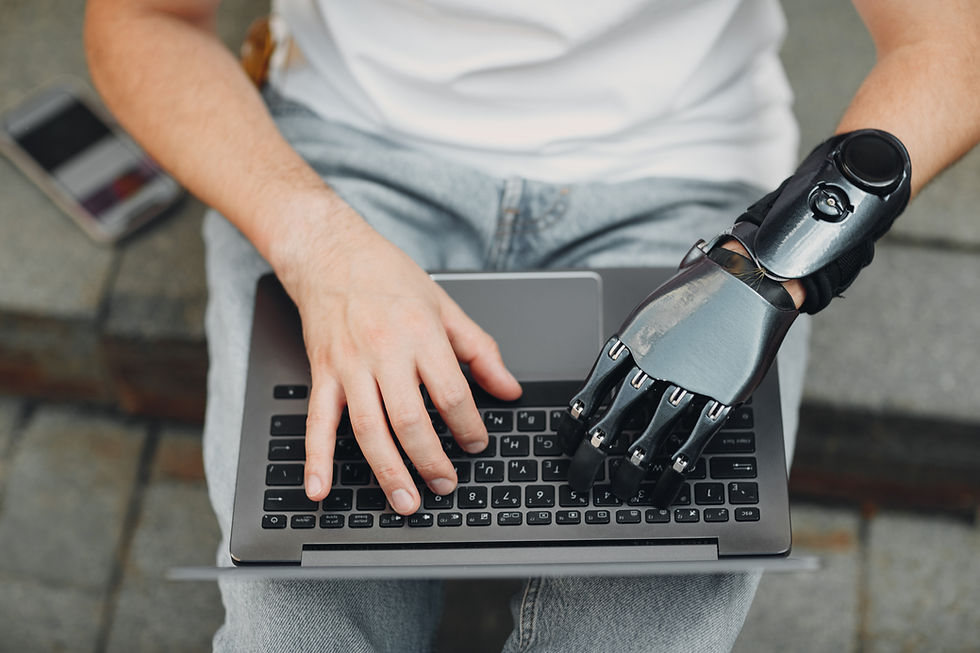Beyond the Hype: Unveiling the Truth about Closed AI
- Fred

- Mar 5, 2024
- 3 min read
Updated: Apr 14, 2024

Closed AI, often shrouded in secrecy, plays a significant role in the world of artificial intelligence (AI). These proprietary systems, developed and controlled by individual companies, offer distinct advantages and disadvantages compared to their open-source counterparts. Let's shed light on the facts surrounding closed AI and explore its potential impact.
Demystifying the Concept: What is Closed AI?
Closed AI systems have the following key characteristics:
Proprietary Development and Control: The underlying algorithms, data, and infrastructure are owned and controlled by a single entity, limiting access and transparency.
Targeted Applications: These systems are often designed to address specific needs and challenges within an organization, leading to focused and optimized solutions.
Commercialization and Competitive Advantage: Companies leverage closed AI to gain a competitive edge by offering unique solutions and protecting their intellectual property.
"Closed AI allows companies to develop and maintain a competitive edge by keeping their AI models and data proprietary and tailoring them to specific business needs," states a recent article by MIT Technology Review.
A recent survey by TechCrunch reveals that 45% of businesses are planning to invest in developing their own closed AI systems in the next three years, highlighting the growing adoption of this approach for achieving specific business goals and safeguarding sensitive data.
Unveiling the Advantages and Disadvantages
Closed AI offers both advantages and disadvantages:
Advantages:
Enhanced Security and Control: Companies maintain complete control over data and algorithms, potentially mitigating security risks and ensuring control over how the AI system operates.
Faster Development and Customization: Closed AI enables rapid development and customization of solutions tailored to specific business needs and challenges.
Protection of Intellectual Property: By keeping the system proprietary, companies safeguard their intellectual property and prevent competitors from replicating their technology.
Disadvantages:
Limited Transparency and Explainability: The lack of access to the inner workings of the system can hinder transparency and make it difficult to understand how decisions are made.
Reduced Collaboration and Innovation: Closed systems can limit opportunities for collaboration and sharing of knowledge, potentially hindering broader innovation in the AI field.
Potential for Bias and Discrimination: Closed systems can perpetuate existing biases present in the training data, leading to discriminatory outcomes if not carefully monitored and mitigated.
"It's crucial to weigh the advantages of enhanced control and security with the potential downsides of limited transparency and stifled innovation when deciding between open and closed AI approaches," explains a recent study by BCG.
Responsible Development and a Balanced Future
As the use of closed AI continues to grow, responsible development and ethical considerations remain paramount:
Prioritizing Fairness and Mitigating Bias: Implementing robust measures to identify and address potential biases in data and algorithms is crucial to ensure fair and ethical use of closed AI systems.
Fostering Openness and Collaboration: Companies can find ways to collaborate and share learnings within ethical boundaries, fostering broader innovation in the AI space.
Ensuring Transparency and Explainability: Efforts to explain how closed AI systems arrive at decisions help build trust and public understanding of this technology.
By prioritizing responsible development, fostering transparency, and ensuring ethical use, closed AI can be harnessed to drive innovation, solve complex problems, and contribute to a more prosperous future.
Closed AI: A Future of Responsible Innovation
Closed AI isn't inherently good or bad, but rather a powerful tool that requires careful consideration.
By acknowledging its advantages and disadvantages, prioritizing responsible development, and fostering ethical practices, we can unlock the potential of closed AI while mitigating potential risks and shaping a future where this technology serves as a force for good.
The question remains: How can companies, policymakers, and the public collaborate to ensure responsible development and ethical use of closed AI systems?
Follow TheOpen.ai for Open Source AI news, trends, and startup stories.



Comentarios